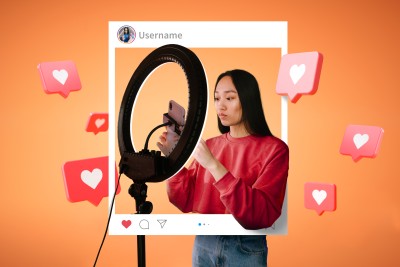Influencer marketing has become a powerful strategy for brands to reach and engage their target audiences. By partnering with influential individuals on social media, businesses can leverage their reach, credibility, and authenticity to promote their products or services. However, building authentic brand partnerships in influencer marketing requires careful planning and strategy. Let’s explore effective strategies for building authentic brand partnerships in influencer marketing, supported by examples, numbers, and statistics.
- Identify Relevant Influencers: The first step is to identify influencers whose values, interests, and audience align with your brand. Choose influencers who genuinely resonate with your target market and have a strong following in your niche. For instance, if you’re a fitness brand, partnering with fitness enthusiasts and trainers with a significant social media presence would be relevant.
- Authenticity and Transparency: Authenticity is key in influencer marketing. Encourage influencers to provide honest reviews and genuine endorsements of your products or services. According to a study by Stackla, 86% of consumers say authenticity is a crucial factor when deciding which brands to support.
- Long-Term Partnerships: Building long-term relationships with influencers can foster authenticity and trust. Long-term partnerships allow influencers to deeply understand and genuinely promote your brand over time, resulting in more meaningful connections with their followers. For example, Daniel Wellington’s collaboration with influencer @kristina_bazan has spanned multiple years, showcasing a consistent and authentic partnership.
- Micro-Influencers: Consider partnering with micro-influencers who have smaller but highly engaged audiences. They often have a closer connection with their followers, leading to higher engagement rates and stronger trust. According to Influencer Marketing Hub, micro-influencers with 10,000 to 100,000 followers have the highest engagement rates at 4.5%.
- Co-Creation and Storytelling: Involve influencers in the co-creation of content to ensure their personal touch and storytelling abilities shine through. Collaborate on campaigns that align with both the influencer’s style and your brand’s message. This approach allows influencers to authentically integrate your brand into their content. One example is Starbucks partnering with lifestyle influencer @aspynovard for a campaign featuring her personalized coffee creations.
- User-Generated Content: Encourage influencers and their followers to create user-generated content related to your brand. This approach fosters authenticity and builds a sense of community. Research by Ipsos shows that user-generated content is trusted by 85% of consumers more than branded content.
- Track Key Performance Indicators (KPIs): Set measurable goals and track KPIs to assess the success of influencer campaigns. Metrics like reach, engagement, website traffic, and conversions can help evaluate the impact of influencer partnerships on brand awareness and sales.
- Influencer Authenticity Tools: Leverage influencer authenticity tools to ensure transparency and credibility. Platforms like HypeAuditor and Socialbakers analyze influencers’ followers to detect fake or suspicious accounts, providing brands with greater confidence in their partnerships.
- Cause-Related Partnerships: Collaborate with influencers who share your brand’s values and support a cause. By aligning with influencers who are passionate about a specific cause, you can build authentic partnerships that resonate with their audience. For example, outdoor apparel brand Patagonia partners with environmental activists and influencers to promote sustainability and conservation efforts.
- Measuring Return on Investment (ROI): It’s crucial to measure the ROI of influencer marketing campaigns to assess their effectiveness. Analyze the impact on sales, brand awareness, website traffic, and social media growth to determine the success and value of your brand partnerships.
In conclusion, building authentic brand partnerships in influencer marketing involves identifying relevant influencers, fostering authenticity and transparency, cultivating long-term relationships, and leveraging strategies such as



